If I could capture the exact moment when mastering the guitar became my reality instead of a distant dream, it was when the concept of ‘guitar finger numbers’ clicked in my mind. At a young age, while journeying into the vast realm of guitar playing, this seemingly minor aspect of learning unfurled into a world of musical possibilities. But the profound significance of this breakthrough wouldn’t be apparent until much later…
Back then, like many novices, I wrestled with coordinating the movement of my fingers over the guitar fretboard. Yet, once the epiphany about the distinct identity of each finger and its role in creating melodious chords occurred, it was as if I had unlocked a secret language of music.
Today, I’m eager to lead you down the path I trod, to delve into the intricacies of guitar finger numbers, and to illuminate how they can conjure the magic every guitar player yearns for. This journey won’t just recalibrate your fingers; it will rearrange your understanding of playing the guitar with finesse.
Many overlook the importance of guitar finger numbers in favor of learning chords or scales. This approach, while seemingly impressive at first, falls short in the long run. I saw my improvement exponentially increase when I began to view my fingers not as mere extensions of my hand but as separate entities with their distinct roles in the orchestra of my playing. And I’d stake my claim – the clear grasp of guitar finger numbers is a game changer for any guitarist, novice or pro.
Armed with this conviction, I’m ready to guide you towards this revelation. We’ll explore the finger numbering system, delve into the right and left hand techniques, discuss guitar tablature fingering, and even flirt with special techniques used in classical and flamenco styles. Furthermore, you’ll learn effective exercises to sharpen your mastery, understand common guitar chords and their finger usage, and dispel any doubts you may bear.
Prepare to navigate the extraordinary realm of guitar finger numbers. From my experience, once you master them, they could be the key to unlocking the sweetest melodies on your guitar. So sip in the excitement, fasten your learning belts, and let’s hit the right note!
Understanding Guitar Finger Numbers
Finger Numbering System for Guitar
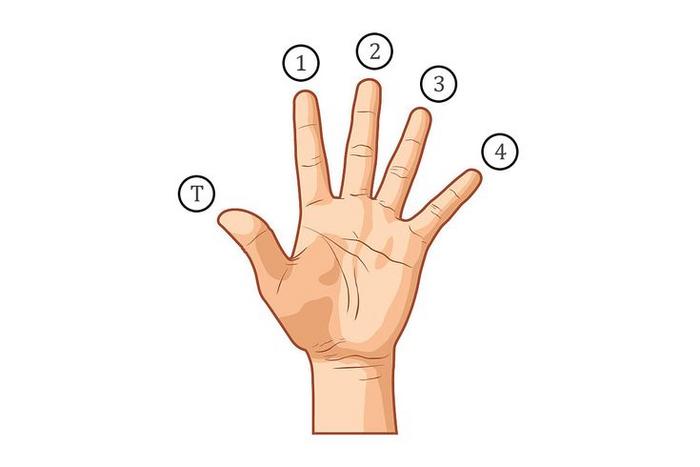
Delving deeper into the realm of Understanding Guitar Finger Numbers, one cannot understated the importance of understanding the finger numbering system for guitar. Grounded in my personal journey, I recall how this system served as my initial navigation tool, mapping out my path in the vast world of guitar playing.
As I weave my memories and expertise into this exposition, it is essential to emphasize that the finger numbering system for guitar is a foundational concept that determines your initial progress and even influences your path in mastering advanced techniques. Unlike keyboard instruments, where each finger number corresponds to a note, the guitar offers more flexibility and diversity, making this system more complex and fascinating.
Embarking on this journey always starts with assigning a specific number to each finger. From the index finger categorized as ‘1’, succeeding to the middle finger as ‘2’, the ring finger being ‘3’, and the little finger referred to as ‘4’, this intricate system of numbers immediately defines an initial connection between you and your guitar. Talking about the thumb, it is often specified with the letters ‘T’ or ‘P’. These basic designations help to simplify complex finger positioning and movements, presenting a useful tool for effective learning and communication.
Translating my personal experience into relevant intrusion, I often utilize the finger numbering system for guitar as an essential element in my teaching approach. Being my first lesson on the guitar, it has evolved to become a constant reminder, emphasizing that every famed riff and intricate melody is deeply rooted in this simple numerical system.
Beyond just playing, this system also serves as an invaluable guide, taking form in notations, building proficiency in sight-reading, and aiding not just beginners but professionals alike in decoding compositions. It is precisely this universal application that underlines its significance in understanding guitar finger numbers.
To conclude, the finger numbering system for a guitar holds great relevance and is truly a game-changer when appropriately utilized. Reflecting on my journey, I can confidently say that fostering this comprehension in your early learning phase will serve as the stepping stone to the diverse world of guitar playing. Building on this, we next move to familiarizing ourselves with Guitar Tablature Fingering, another milestone in mastering the guitar with finesse.
Guitar Tablature Fingering

As we delve deeper into understanding guitar finger numbers, we pivot towards an integral part of this journey – ‘Guitar tablature fingering’. A game-changer in my personal journey to mastery, guitar tablature is the crossroads where music theory and the physical handling of the instrument converge.
Perhaps you’re wondering, what is the significance of guitar tablature fingering? It’s a method used to read guitar music. Instead of standard notation which tells you what note to play, tablature indicates where to place your fingers to produce that note. Visual and intuitive, tablatures reflect the guitar fretboard, allowing a guitarist to understand and execute intricate finger numbers and placements.
Tablatures have a simplicity about them, and yet they underscore the complexity involved in understanding guitar finger numbers. They help in bringing structure and efficiency, especially while learning new pieces or developing finger techniques.
I can’t highlight enough how instrumental the guitar tablature was in my journey of mastery. It was a bridge that allowed me to connect theoretical knowledge with the physical interaction with my guitar. It was where I first started acknowledging the specific role of each finger while playing, progressively getting the knack of agility and coordination.
In sharing my experiences, my aim is to underscore the relevance of tablatures in understanding guitar finger numbers. To master guitar playing, it isn’t enough to engage with the instrument physically. Comprehending the underlying theory is equally important, and the guitar tablature becomes that indispensable tool enabling you to see and implement that theoretical knowledge onto the guitar fretboard.
With tablature fingering, we pave the way for understanding not just the finger numbers, but also the exact positioning, movements, and nuances, vital for perfect execution.
By now, I hope it’s clear that understanding guitar finger numbers and the art of tablature fingering are inseparable. As we proceed further into right hand techniques, you’ll see how even more depth is added to the concept of finger numbers. And guitar tablature, in its essence, is the guiding compass, helping every aspiring guitarist navigate this complex yet rewarding journey.
Right Hand and Left Hand Techniques
Right Hand Technique
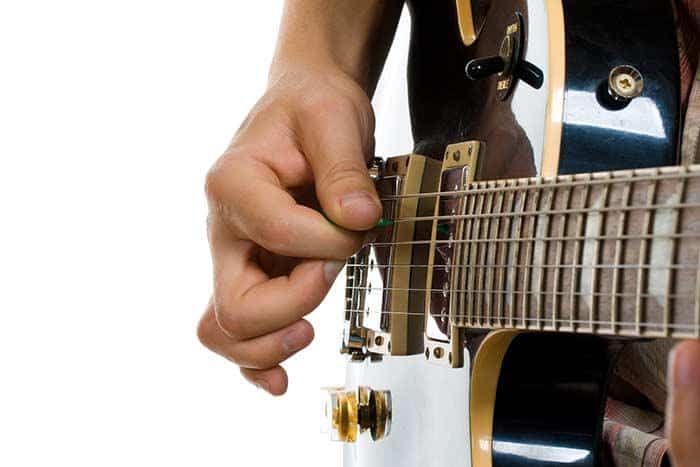
When it comes to mastering guitar finger numbers, understanding both right and left-hand techniques in-depth is crucial. This brings us to further unpacking the highly significant component of ‘Right Hand Technique’.
My deep-seated experience with right-hand technique is strongly rooted in the classical PIMA approach, an indispensable foundation for guitarist of all levels and styles. This technique employs the thumb (P), index (I), middle (M), and ring (A) fingers, a code derived from their Spanish names.
The beauty and potency of the PIMA technique lie in its capability to evoke rich and intricate melodies, adding layers of complexity to your guitar playing. For instance, using different fingers to pluck strings concurrently or successively can produce harmony or melody lines, respectively. PIMA also serves to cultivate the dexterity of right-hand fingers.
However, an important note is that PIMA does not exist in isolation. As a guitarist, you’ll need to understand the nomenclature system of the right hand fingers in parallel with left-hand finger names. This cohesion is critical in ensuring clarity in guitar tablature and notation.
Indeed, the better you know your right-hand finger names and their roles in strumming and plucking, the smoother your musical journey will be. No doubt, working on your right hand technique might feel challenging at first, but remember, Rome wasn’t built in a day. With consistent practice, it becomes second nature and soon you’ll be playing your guitar with beautiful fluency.
Mastering the right-hand technique should not take a backseat in your guitar-playing journey. Consider it as significant as the left-hand technique, and you’ll notice a significant improvement in the quality of your guitar playing. Let’s now turn our attention to the left-hand technique, a fundamental counterpart to the right hand in the pursuit of mastering guitar finger numbers.
Left Hand Technique
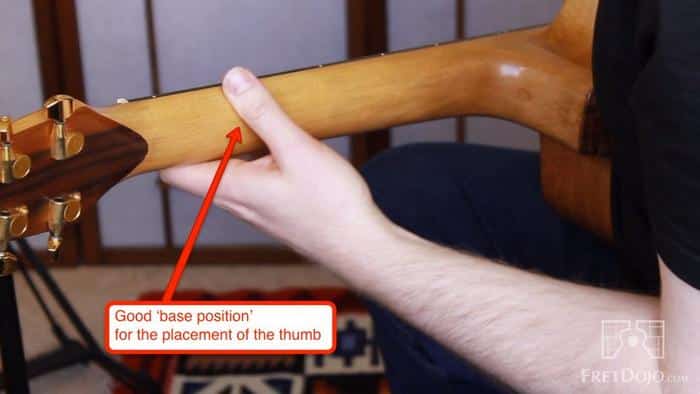
After exploring the right hand techniques, it’s equally essential to delve into the role of your left hand, or more specifically, your fretting hand technique. Having a precision-driven left-hand technique will significantly impact your overall guitar playing efficiency.
Understanding the left hand’s role in fretting transformed the way I approach guitar. It’s not just about pressing down on the strings; it’s about the calculated placement, the thoughtful control of pressure, and the flexibility of movement among the left-hand finger numbers. This realization significantly elevated my own playing, and I’ve distilled the insights I’ve gleaned into a series of techniques.
Firstly, it’s crucial to recognize the left-hand finger numbers – the index finger as 1, middle finger as 2, ring finger is 3, and the little finger is 4. Keep in mind that precise fretting largely comes down to how effectively you utilize these fingers. Each finger should hover as close as possible to its respective fret and be prepared to act—timing and positioning are key.
The strength, balance, and independent motion of your left-hand fingers are critical areas for improvement, regardless of whether you’re a beginner or an advanced player. By mastering the fretting hand technique, we not only add depth to our music but also enhance our form, reduce strain, and build a foundation for exploring more complex pieces.
Remember that development in this area doesn’t happen overnight; it’s a constant process of refinement and precision. The beauty of mastering this left-hand technique is that while it requires dedicated practice and consistency, it’s within reach of every ambitious guitarist.
After honing the basics of the left-hand finger numbers technique, we’ll forge ahead into some special techniques leveraging the different strengths of both the hands, including traditional classical and flamenco styles. Each technique will help you understand your fretting hand better and reveal insights that change the way you approach the guitar.
Special Techniques: Classical and Flamenco
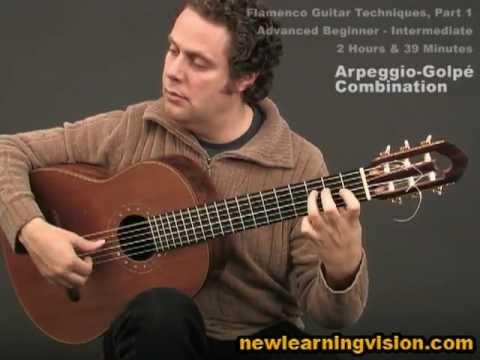
As an avid guitar player who has spent countless hours refining my craft, I’ve managed to develop specialized techniques across various music styles. Exploring the worlds of classical, flamenco, and folk guitar have not only broadened my playing techniques but also enriched my understanding of this art form. What truly excites me is dissecting the nuances of fingerwork, observing how each style has unique finger notations that lend a distinctive charm to the music they are known for.
Ever wondered why the sound of Spanish guitars is just so enchanting? It’s because they use some unique finger techniques that we’re about to reveal. My journey with these music styles has made me well-acquainted with the specifics of classical guitar finger notation and flamenco guitar finger names, which I’m eager to share here.
The classical guitar style, entwined with its rich history and tradition, employs a very systematic approach to finger notation. Each finger on the right hand has a designated task: thumb (pulgar) plays bass, index (índice) and middle (medio) alternate for melody, and the ring (anular) comes in for added texture. Unlike the uniform naming system for the left hand, each right-hand finger is assigned a letter-label denoting its Spanish name, with ‘p’ for thumb, ‘i’ for index, ‘m’ for middle, and ‘a’ for ring finger. Developing a deep sense of coordination between these fingers, you’ll soon be orchestrating some enchanting melodies.
In contrast, flamenco guitar, synonymous with fiery passion and dramatic expression, demands a different type of finger discipline. Primarily a percussive style, the flamenco technique lays stress on certain fingers—predominantly the thumb (pulgar), index (índice), and middle (medio). The names used in flamenco are essentially the same as in classical guitar, but it’s their application, melded with dense rhythmic structures, that defines this intense and mesmerizing style of music.
I came to realize that these traditional finger notations are so much more than mere technical guidelines; they are the backbone of these music forms. Each finger in classical and flamenco techniques has a distinct story to tell—an essential course about culture, passion, and expression in the realm of guitar music.
Having trained myself in these specialized techniques, I can confidently affirm that it’s these subtleties that make the difference between simply playing the guitar and truly mastering it. Taylor your fingers to the techniques of classical and flamenco guitar, and you’ll discover their transformative power, opening up an entirely new realm of sonic possibilities.
Just as we’ve explored these special techniques, in the next section, we will dive into some effective exercises and practice methods that can further help finetune your skills. Guided by the right approach, relentless practice, and above all, a love for music, achieving proficiency in these iconic guitar styles is within your grasp.
Effective Exercises and Practice
Finger Strengthening Exercises
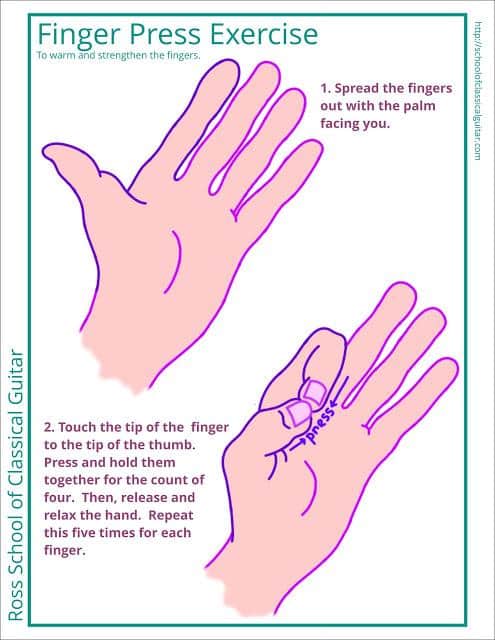
Achieving mastery in guitar playing involves intricate finger work, which brings us to a crucial topic: finger strengthening for guitar. As someone who has been playing the guitar diligently for decades, I’ve learned that the strength and endurance in my fingers are what have allowed me to continue performing even challenging pieces with ease. Moreover, their relevance to efficient practice cannot be overemphasized.
Finger strengthening exercises equip your fingers with the stamina required for prolonged playing, enhance your control over the instrument, and aid in fine-tuning your technique. My personal journey of mastering musical notes has led me to identify several exercises that have been especially beneficial in bolstering finger strength.
One of the elemental exercises involves practicing scales slowly, ensuring each note rings clear. Paying attention to each finger’s movement and resistance against the strings can greatly improve finger strength. Progressively increasing the tempo of the scale as your strength and accuracy improve can also be particularly beneficial.
As well as practicing scales, another tip is to work on finger blocking exercises. These include segmenting chords into portions that are played separately, thus improving precision and finger independence, a building block to finger strengthening for guitar.
These exercises have proven effective for me over the years, and I’m confident they’ll help you too, provided they’re performed with dedication and regularity. While doing this, remember that it’s not about raw strength, but rather efficient leverage. Ensure your fingers are optimally positioned on the fretboard for maximum efficiency and minimum strain. Physical discomfort or pain is a warning sign that you are either overdoing it or employing improper technique. Constant physical vigilance is therefore as essential as ongoing rhythmic and melodic exploration.
Building finger strength is a gradual process, the results of which will reveal themselves in the nimbleness and stamina of your fingers to navigate across the fretboard. As you progress into the next section of our guide, let these strengthening principles guide your pursuit of improving finger dexterity. It’s a part of a wider journey towards refining your guitar craft, one that, when paired with efficient practices and effective exercises, will contribute towards your comprehensive knowledge and utilization of guitar finger numbers.
Improving Finger Dexterity
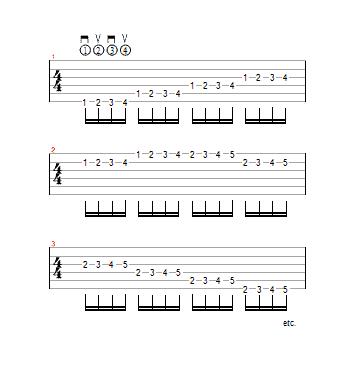
After understanding the numbering system and mastering the techniques, we now move our focus to individual finger control – or, in other words, improving your guitar finger dexterity. Finger dexterity is an essential aspect of effective guitar playing, whether you’re working on a complex classical piece or an intricate flamenco style.
Dexterity enables each finger to function independently, giving you greater control, enhanced speed, and, ultimately, a broader range of musical expression. But how does one develop such dexterity? Much like building muscles and endurance in athletics, with focused practice and exercises.
I’ve developed specific exercises to enhance this crucial skill. Each designed to gradually increase your control and flexibility. The first set of exercises involves playing scales and arpeggios using different finger patterns. For instance, by alternately focusing on the first, second, and third strings, you start developing the ability to independently operate each finger.
Next, I’d recommend focusing on ‘spider’ exercises. These challenge your fingers to move in unfamiliar ways, requiring controlled, independent motion from each finger, hence improving dexterity and flexibility. Take it slow initially, prioritizing accuracy over speed. Remember, excellent finger dexterity comes from precise, controlled movements rather than rapid, unruly ones.
Finally, always warm up your fingers before embarking on these exercises. This is crucial to avoid strain or injury. Cold muscles are prone to damage, so run through some warm-up scales or strum a few casual chords before diving into the heavy lifting.
Your journey to masterful guitar playing is a gradual one, with each practice session taking you a step further. As you skillfully traverse through the review of finger strengthening exercises to these dexterity routines, in the subsequent section, we’ll explore the world of common guitar chords and their finger usage. So, let’s keep practicing until we achieve the superior control and flexibility that is the hallmark of a skilled guitar player.
Common Guitar Chords and Finger Usage
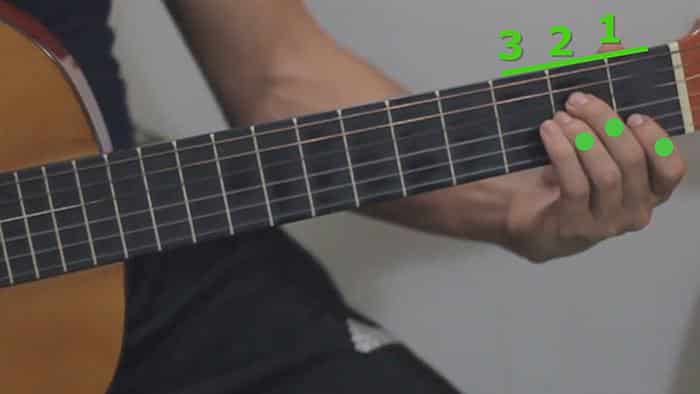
Continuing our journey down the path of finger mastery on the guitar, we’ve arrived at a truly pivotal point: common guitar chords and finger usage. After learning the finger numbering system, applying right and left-hand techniques, and doing regular finger strengthening exercises, it is time to use all that hard work to form some beautiful music.
The game changes drastically once you begin structuring chords. Skills you found challenging when starting may become a breeze, and the chords you thought were basic may need a fresh eye. This eye-opener relies on my decades of experience playing the guitar. Yes, playing chords effectively is the foundation of any guitar performance, but the journey to a perfect chord is unique to each one of us.
How well can you play a C major or a G major? Chord performance is largely about precise finger positioning. Let’s master this vital aspect together! At this phase of learning, having a detailed understanding of where each finger lands on the fretboard, or which fingers are used for guitar chords, marks the difference between a “good enough” guitar player and a great one.
Let me tell you about a time when I first learned the importance of guitar finger positioning. Interestingly, it was the simple chords that tripped me up the most. For instance, the E minor chord, consisting of only two notes. I could play it, sure, but it didn’t sound just right. After a lot of practice and research, I discovered that even the seemingly easiest chords require precise and proper finger placement. Here’s a tip, in playing an E minor, place your middle and ring fingers on the second fret of the fifth and fourth strings respectively, and voila, you have mastered one more chord.
Beyond precise positioning, another fundamental principle to perfecting chord mastery is a skill called “chord switching”. This is the ability to switch quickly and smoothly from one chord to the next. An effective way to improve your speed is by minimizing the movement of your fingers between switching chords. And remember, staying relaxed is key – tense fingers don’t make beautiful music!
Each of these insights into the fingers used for guitar chords has been hard-earned through years of practice and professional performances. And I am thrilled to share them with you. Every guitarist’s journey is unique, but we share the common thread of wanting to make beautiful music.
We are all students in the classroom of guitar playing and each chord, each strum, every song, marks another lesson in our journey. Remember, it is not about being the best, it is about being YOUR best. It’s not just about technical perfection, but the emotion and experience you bring in your music. Keep practicing, keep learning, and most importantly, keep playing.
FAQs
What is ‘Mastering Guitar Finger Numbers: An Ultimate Guide’?
Who is Richard Miller?
Why is it important to understand guitar finger numbers?
Conclusion
Mastering the nuance and precision inherent in guitar finger numbers is a journey rich with rewards. Learning to expertly navigate the fingerboard with your fretting hand, mastering diverse techniques from alternate picking to unique Flamenco elements, and implementing tailored finger strengthening exercises all require commitment. But persist in your journey, and I promise the rewards will be profound.
Ready to discover the new realms of musical possibilities by mastering guitar finger numbers? Embrace the challenge, train with deliberation, and seek constant improvement. Remember that every accomplished guitarist was once a beginner, every melodic riff an unfretted string, every chord progression unformed. The invaluable gift of playing guitar never fails to enrich, to expand, and to compel you further along your musical journey. The joy of collaboration, the expression of emotion through melody and rhythm – these moments make every practice, every exercise, every dedication to understanding guitar finger numbers worth it.
Learning these techniques and methods has tremendously shaped my guitar-playing experience. From understanding guitar tablature fingering to tackling intricate right and left hand techniques, from exploring special techniques like classical and Flamenco styles to practicing finger strengthening exercises and unlocking the nuances of common chords – every one of these chapters fueled my musical progression. Over the years, I’ve learnt that it’s consistent application that propels you on this path – that eases the stiffest fingers, that turns the foreign fretboard into familiar terrain, that becomes the key to unlocking your unique musical expression.
Reflecting on my journey from those first rudimentary strums to the present moment, I’m filled with gratitude. I consider it a privilege to share these treasures gleaned from my experience, to guide you in your own exploration of guitar finger numbers. Here’s to your continued growth, to the chords still unstrummed, to the music waiting to be unleashed. Play on!
